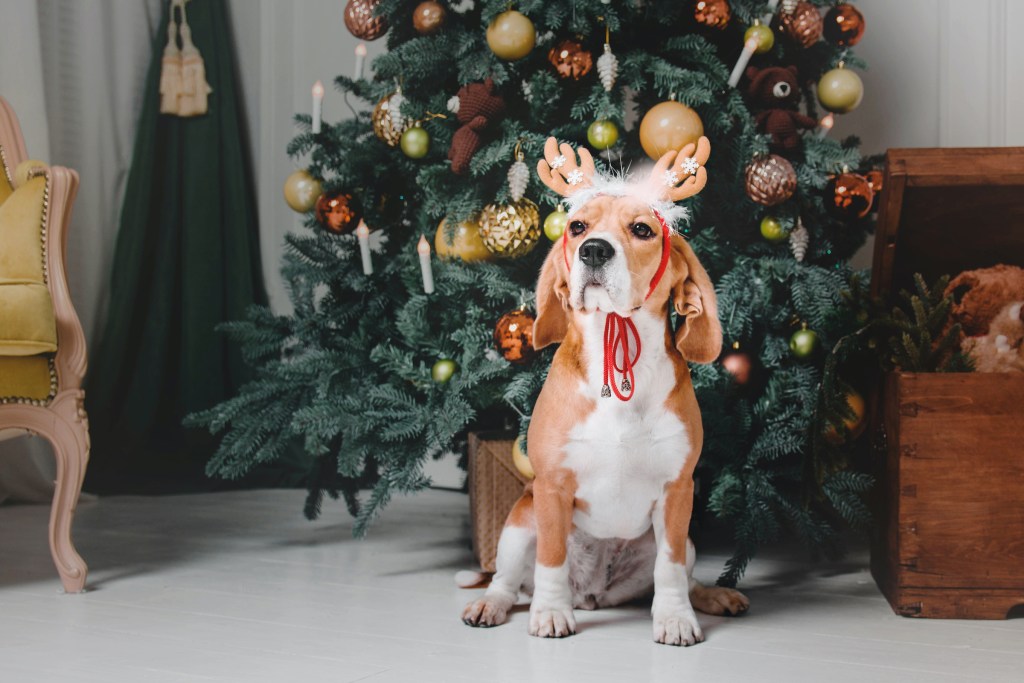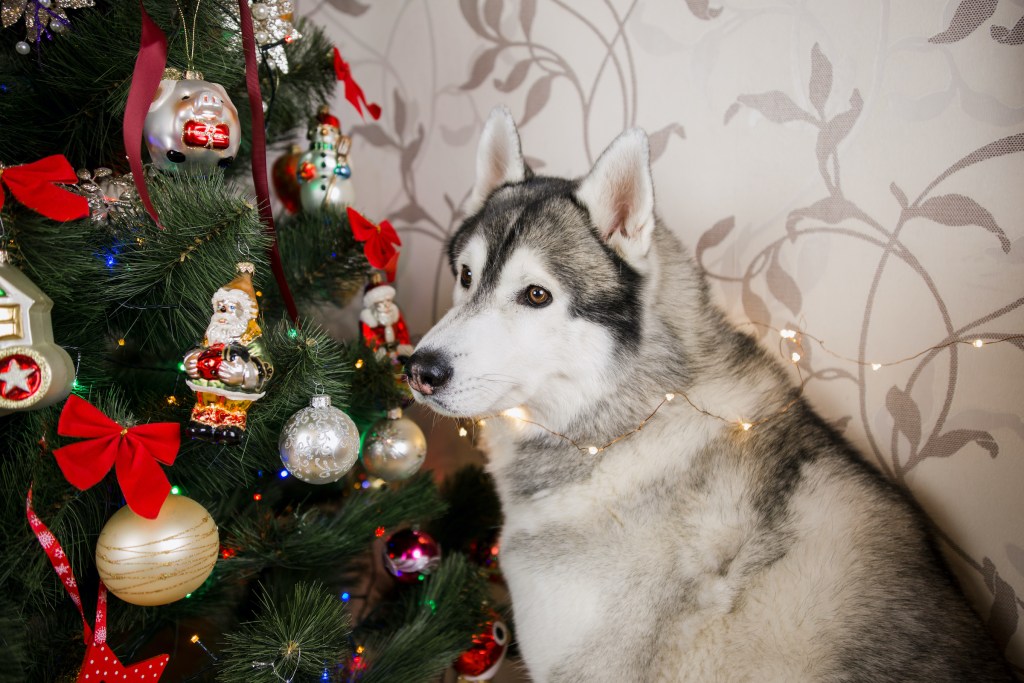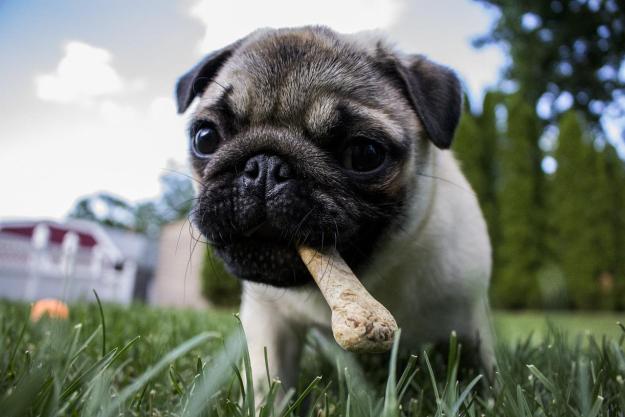Bringing home a fresh-cut Christmas tree is only one way to get into the holiday spirit, but it could cause a problem for your pets. Dogs drinking Christmas tree water may seem completely logical, but it could also lead to a wide variety of unpleasant side effects for them and for you. Keep scrolling to learn why Christmas tree water could be dangerous for your pup and what you can do to keep your doggo from bothering the tree — all while keeping your Christmas tree healthy, of course!
Protecting your pets this holiday season will help you let go of your worries and enjoy every festive moment so you can have a very merry Christmas!

Why is Christmas tree water bad for dogs?
Even though you may use plain water to keep your tree hydrated during the holiday season — which the National Christmas Tree Association recommends — it’s not a good idea for your dog to drink it. According to the National Capital Poison Center (NCPC), a small amount of tree water may not cause any issues, but it could become a real problem if your pup makes a habit of it. Granville Veterinary Clinic notes that lethargy, vomiting, diarrhea, and other behavioral changes can be some of the signs of poisoning from Christmas tree water.
Water that sits in a tree stand for even a day or two can gather lots of bacteria and other nasty particles, according to NCPC (not to mention the pine needles that will likely fall into the water — they can be sharp). It’s easy to see why this concoction could be dangerous when swallowed. Hartz notes that fir tree oil can also be mildly irritating to dogs, whether ingested or simply touched.
Sometimes Christmas tree farms use preservatives to help their firs and spruces last. NCPC explains that commercial preservatives often contain “some kind of fertilizer, some type of sugar, and perhaps fungicides.” This can seep into the water, which could cause mild to severe illness in pets.
Homemade fertilizers and pesticides can make an appearance too. NCPC lists these common ingredients:
- Soda
- Whiskey
- Bleach and vinegar or lemon juice
- Aspirin
- Corn syrup
They may sound innocent, but many of these ingredients are toxic to dogs. Alcohol, for example, is extremely poisonous for canines, and aspirin should only be given under veterinary supervision. Obviously, no one should ingest bleach, but combining it with vinegar can also produce a dangerous, even lethal byproduct — chlorine gas — which is extremely harmful to inhale.

Five ways to stop dogs drinking Christmas tree water
Luckily, there’s a lot you can do to keep your beloved pup from sipping tree water. There are many at-home tricks you can use that will only take a couple of seconds out of your day. Despite the slight inconvenience, it will keep your pooch safe — and maybe even save his life.
Hydration
Of course, you can start by making sure your fur baby always has plenty of fresh water. This might discourage him from trying out the Christmas tree water, but a curious pup may still be tempted.
Deterrent methods, like gates or bitter tastes
A pet or baby gate might be your best bet for keeping dogs away from the tree altogether, especially when you need to leave the house. Additionally, a deterrent spray like Grannick’s Bitter Apple Spray for dogs can also discourage any unwanted curiosity.
Cover the Christmas tree water
Granville Veterinary Clinic also shared their genius idea: using some kind of large lid (like off of a plastic storage container) to create a cover for the tree water bowl. All you need to do is cut a hole in the middle of the lid that’s big enough to fit around the tree trunk. You’ll also need to cut a slit in the side of the lid to help slide the cover on and off. You may also need to tape or weigh it down to keep out stubborn pups who might try to move it.
Skip the farm-fresh tree this year
Of course, you can always opt for an artificial Christmas tree to avoid the entire water situation this holiday season. Still, you’ll need to keep an eye out for any faux pine needles or other debris that your dog could ingest, especially as your fake tree gets older.
What to do if your dog drinks Christmas tree water this winter
If you notice or even suspect that your dog drank water from the tree stand, keep a close eye on his behavior and bowel movements. Mild cases of toxicity might not result in any symptoms at all, though you should still encourage your pup to stay hydrated with his own water. If you know the tree stand bowl contains anything like alcohol, bleach, or another substance known to be highly toxic to dogs, take your dog to your trusted veterinarian immediately if you see him drinking from the bowl. Don’t wait!
If you notice any symptoms like nausea, vomiting, lethargy (including refusal to eat), excessive drooling, or diarrhea, give your veterinarian a call. Not many situations end up being an emergency, but the sooner you can take care of them, the sooner your pup will be back to enjoying the holidays.
Even if you have an extra-curious dog in your family, it’s perfectly possible to keep a Christmas tree safely in your home. More importantly, you’ll be keeping your furry friend safe, too, which is one surefire way to ensure a happy howl-iday season for everyone. Now you can focus on those presents!
Editors' Recommendations
- Why does my dog have a bald patch on their tail? Here are the answers you need
- Looking for signs your dog has ticks? These telltale symptoms mean you have a flea or tick problem
- Xylitol is dangerous for dogs: 10 surprising products that contain it as a hidden ingredient
- How much water should your puppy drink in a day? Here are the factors to consider
- Is your dog’s breathing problems old age or something else? What to know





